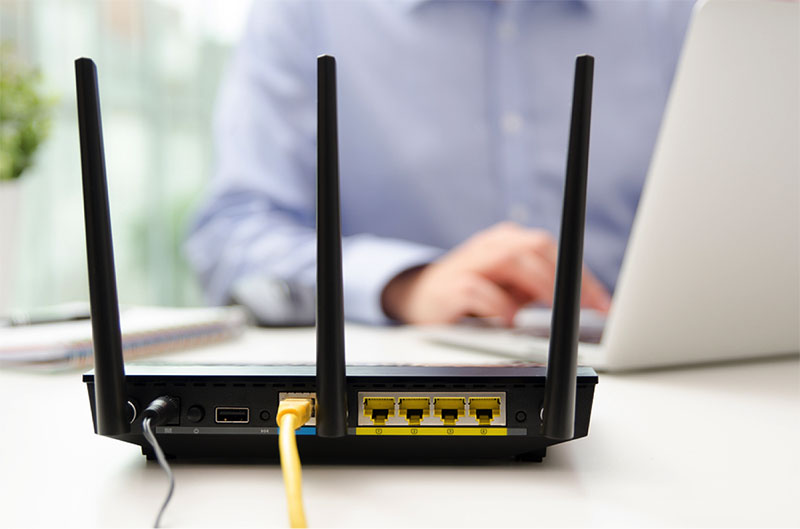HOT OFFER! Save $180 on selected internet plans + get beIN SPORTS CONNECT included!...Use promo code BEIN30 at checkout! Hurry, limited time only!
Top tips to secure your Wi-Fi connection at home
Internet & Mobile Security Blog | MATE | 26 December 2017

Install your router, switch it on, jump on the internet, and you’re away… You don’t need to worry about it any more right?
As long as you can quickly access the internet on your smartphone, tablet or laptop, most people don’t see a reason to play around with their Wifi router. It’s doing it’s job, and everyone is happy.
That’s true, but unfortunately we live in a highly digital world where malicious individuals are regularly trying to get personal data from Wifi networks. So, to avoid any security breaches on your home Wifi network, it’s important to lock it up for safe keeping. Here are a few tips on how.
Change the router’s name and password
Routers come with default names and passwords.
The most common passwords include numerical combinations such as “0000” or “1234.” These passwords are easy to crack and can compromise the security of your network. So change them as well as the username of the router. Use a combination of letters, numbers and symbols to make a more secure password.
While the service set identifier (SSID) helps people identify your network, using the name that came with the router can promote unauthorised access. Not to mention, it makes it easier for other people to know the type of router that you are using.
Try to give your router a more personalised identity. This way, you will keep hackers at bay and boot off those who have had previous access. You can even choose not to broadcast the SSID once you make the changes to prevent anyone from seeing it.
Encrypt your router
This is a no-brainer for those who are security-savvy internet users. It is one of the most important things you must consider to secure your Wifi network from hackers.
To activate the encryption, go to the router’s settings and navigate to security options. Turn on the WPA2-Personal option. It may also show as WPA2-PSK. If your router does not have this security feature, it is advisable you buy a more modern one.
You will need to enter a password for the encryption to take effect, but the encryption password is different from the one used to secure the router.
Of course, if all of this sounds like jargon to you, seek help from an expert!
Activate a firewall
Your router has an inbuilt firewall that protects you against outside attacks. It is usually referred to as a stateful packet inspection (SPI) or network address translation (NAT). Whichever name your router uses, turn it on to add an additional layer of protection to your network.
For optimum protection of your own data, look for a firewall software and install it on your personal computer or smartphone. There is a variety of software available out there designed for both Windows and IOS systems.
Don’t enable the guest network
It’s nice to welcome guests to your home with a reliable internet connection without using an encrypted password. However, it might turn out that some of these guests have malicious intentions, or devices that have been compromised by hackers.
To avoid these risks, turn off any guest networks.
Wrapping up
There is more to safe browsing than just installing an antivirus on your smartphone or PC. Hackers can also access your information via an unsecured Wifi network in your home. The above tips will help you keep your network secure, stable and more reliable.
